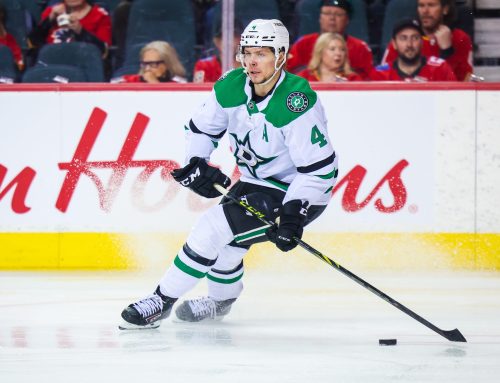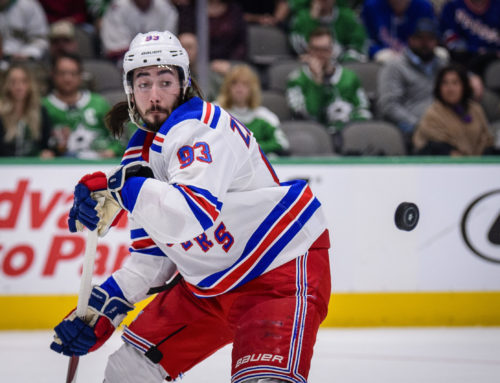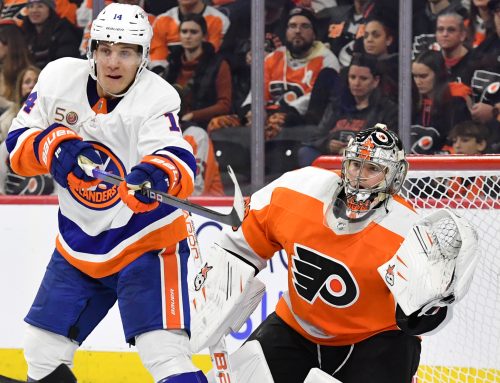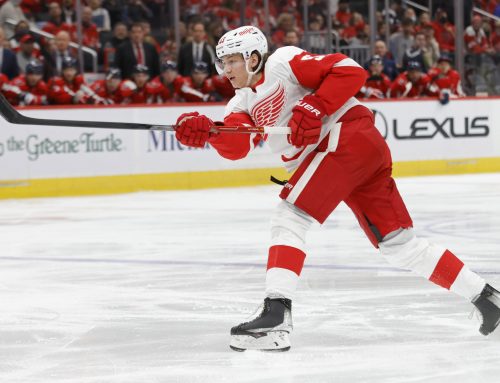Does Size Really Matter?
Rick Roos
2013-03-13

Investigating the success rate of big players versus small, and whether “small, skilled” is trending
We've heard the old adage "you can't teach size" to explain why teams from all pro sports are always eager to draft, trade for, or sign big/tall players. And one need only look back to the last lockout-shortened season of 1994-95 to remember all the hype surrounding Philly's Legion of Doom line of Eric Lindros, John LeClair, and Mikael Renberg, who all finished in the top 10 in scoring and averaged 6-3' and about 235 pounds. On the heels of that, every NHL team wanted their own giant forwards, and except for outliers like 5-6' Theo Fleury the points scoring leaders also reflected this emphasis on size in the years that followed.
These days it certainly seems like more and more small forwards are finding themselves on NHL rosters, and actually making NHL and fantasy impact. But do the numbers really back up that observation, or have teams continued to cling to a "bigger is better" mentality, at least when it comes to forwards? With those questions in mind, this week I take a look at NHL rosters to compare the number of "big" players versus the number of "small" players and see if any conclusions can be made about whether small players are indeed finding success and helping the offensive numbers for their NHL (and fantasy) teams. And then I'll end with my usual "Final Verdict", which in this case is about how this data might affect your fantasy team now and down the road.
Note that since the average NHL height is reported to be about 6-1', I'll use 6-4' or taller as the definition of a "big" forward and 5-10' or shorter as the definition of a "small" forward.
The Roster Breakdowns
Here is some of the big vs. small roster data for this season (as of March 6th).
· There were 40 big forwards and 44 small forwards on NHL rosters
· Only three teams – Edmonton, Ottawa, Pittsburgh – had no "big" or "small" forwards (all their forwards were between 5-11 and 6-3)
· The team with the most "big" forwards (four) was Winnipeg, while two teams (Calgary and Montreal) were tied for the most "small" forwards, with each also having four. Two teams (Carolina, San Jose) had three big forwards, and two had three small forwards (Nashville, St. Louis). All other teams had some combination of zero, one, or two of each.
· In all, ten teams had more small forwards than big forwards, while only eight had more big forwards than small forwards (the other 12 had an equal number of each)
From this, we can see that things were pretty even overall for big vs. small players on NHL rosters. But what about whether big vs. small has made an impact on team success and offense, or on individual fantasy stats for the season so far? Let's examine those next.
Does having more big or small forwards affect team success and scoring?
Apparently not, as although it's still early, if the playoffs were based on the standings as of games through March 5th there would have been six playoff bound teams with more small forwards than big forwards and seven with more big forwards than small forwards (note: this is looking at 18 "playoff" teams instead of 16, since three were tied for the final spot in the West). The total number of big forwards on playoff bound teams was 25, versus 24 small forwards, and although four of the playoff bound teams had no big forwards, the same number also had no small forwards. In short, virtually no effect in this area based on big vs. small.
In terms of total goals scored among the 30 NHL teams through March 5th games, the three teams with no big or small forwards were ranked #1 (Pittsburgh), #24 (Edmonton), and #26 (Ottawa) in team goals scored, for an average ranking of 17th. The three teams with the most big forwards were ranked #9 (Carolina), #22 (Winnipeg), and #29 (San Jose) in goals scored, for an average ranking of 20th. The four teams with the most small forwards were ranked #5 (Montreal), #11 (St. Louis), #20 (Calgary) and #30 (Nashville) in goals scored, for an average ranking of #16.5th. Although there are no clear advantages or disadvantages, a slight edge went to the teams with more small players versus those with more big guys.
How do big and small players compare in terms of individual scoring?
Here we do see more of a difference, but – as it turns out – not a very consequential one. If you combine the stats (again, through March 5th games) for all 40 big forwards, you arrive at 283 total points in 695 total games, while for the 44 small forwards the totals are 381 points in 725 games. That means the 40 big players had scored an average of just about 7.1 points each, compared to an average of nearly 8.7 for the small forwards – a difference of about 18%. And the points per game average shows an even wider gap, with the big forwards averaging about .41 points per game compared to about .53 points per game for the small forwards, for a difference of about 22%.
But if you dig deeper, there is not much of a meaningful difference in these numbers, since most of the points edge among the small forwards comes from those who are less likely to be owned in fantasy leagues. Here's a breakdown in the points ranges for each group, with a listing of players that fall into the top three categories:
|
Points range |
Number of big forwards in this range
📢 advertisement:
|
Number of small forwards in this range |
|
20+ |
4 (Eric Staal, Ryan Getzlaf, Joe Thornton, Vincent Lecavalier) |
3 (Martin St. Louis, Cory Conacher, Saku Koivu) |
|
15 to 19 |
5 (Brad Marchand, Tyler Ennis, Michael Cammalleri, Jiri Hudler, David Desharnais) |
|
|
10 to 14 |
7 (Milan Lucic, Bryan Bickell, Dany Heatley, Martin Hanzal, David Moss, Patrick Berglund, Eric Fehr) |
7 (Andrew Cogliano, Derek Roy, Brian Gionta, Brendan Gallagher, Daniel Briere, Matt Read, Steve Sullivan) |
|
4 to 9 |
9 |
18 |
|
0 to 3 |
16 |
11 |
As you can see, things are dead even in the 10+ point ranges, with each group having 15 total players in the three groups. And adding the point totals for the top 15, you arrive at 243 points for the big forwards and 240 points for small forwards. Again, almost totally even. It's not until you get to the zero to nine point range where you see a difference, as there are far more smaller forwards in the four to nine point range and far fewer in the "bottom of the barrel" zero to three point range. But as noted above, other than players who have been injured, most of those in the nine points or less range as of March 6th were unlikely to be owned in all but the deepest of fantasy leagues, so although there is an overall difference in scoring output among the 40 big forwards and the 44 small forwards, it is not very meaningful from a fantasy perspective.
The Final Verdict
This data shows that small NHL forwards have come a long way since the Legion of Doom days, and at this point they're just as productive as big players. What's more, although the fact that more small forwards manage to fall in the four to nine point range (i.e., less than 0.5 points per game) probably doesn't matter much to most fantasy GMs looking to fill their rosters, it does clearly show that more small forwards are getting a chance to play in the NHL and are holding their own offensively as much if not more than their big forward counterparts.
Because of this, it stands to reason that if NHL teams haven't already become receptive to giving small forwards more of a real chance to play meaningful minutes in the NHL then that might have a better chance of happening in the near future. And if it does, we'll likely see even more small players like Cory Conacher or David Desharnais be able to stick with teams and make an impact when in years past they might not have been given a fair shot to display their true talents at the NHL level.
For fantasy hockey GMs, this means you might want to be more willing to grab some smaller players for your teams, since there is somewhat less fear that teams will simply ignore them in favor of a big player. That having been said, if you're in a prospects draft and it comes down to a decision between two players who seem equal in every way except that one is 6'5'' and the other is 5'7'', it's still probably a safer bet to go with the 6'5'' player if only because teams probably will remain more inclined to give that player a better shot down the road.





 BUF
BUF N.J
N.J PHI
PHI MIN
MIN FLA
FLA WPG
WPG VAN
VAN TOR
TOR CGY
CGY CAR
CAR